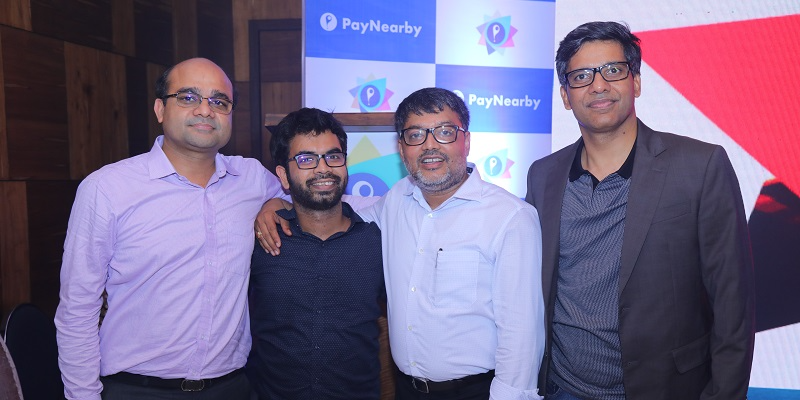[Product Roadmap] How B2B marketplace Jumbotail has been able to maintain scale amid the coronavirus crisis
A product roadmap clarifies the why, what, and how behind what a tech startup is building. This week, we take a closer look at B2B ecommerce startup Jumbotail, which uses technology to address the inventory challenges of unorganised kiranas.
The size of Indian retail market is a whopping $700 billion. Ninety percent of this, approximately $630 billion, is owned by local kirana stores and unorganised, unbranded retailers. Despite lacking the glamour of high-street malls and outlets, these stores are known for their consistency, reliability, and efficiency.
It is this very market that B2B ecommerce platform is tapping. Founded in 2015 by Ashish Jhina and S Karthik Venkateswaran as a wholesale online marketplace for kiranas, Jumbotail is looking to solve one challenge for these stores: getting the inventory right.
The coronavirus crisis and the ensuing lockdown have highlighted the most important problem in the supply chain - the logistics involved in getting the inventory. Many store owners have to travel several kilometres to stock up.
“We solve complex problems in the food and grocery ecosystem - discovery of thousands of products through an online marketplace, recommender systems, pricing engines, delivery promise engines, supply chain, warehouse management systems, order processing, logistics planning, route optimisations, cash movement, payments, credit, fintech, credit scoring, computer vision and AI, retail point of sale, omni-channel commerce integrations with other B2C platforms, and more,” Ashish says.

The co-founders of B2B marketplace Jumbotail
Working amid the coronavirus crisis
The platform connects kiranas to brands, suppliers, and producers. Jumbotail offers full-stack supply chain, warehouse, and fulfilment capabilities to sellers, using the platform’s network of fulfilment and distribution centres, along with last-mile storefront delivery.
“Our fintech platform connects lending partners to kiranas for working capital lending. We transform kiranas into J24 stores - modern convenience grocery stores, owned and operated by entrepreneurs, and powered by Jumbotail’s new retail platform, PoS, loyalty programmes, and consumer payment solutions,” Ashish says.
In the last four years, Jumbotail has tied up with over 26,000 kiranas in Bengaluru and raised $29 million in funding.
Amid the COVID-19 pandemic, the team has been able to maintain the same levels of customer experience and scale their supply chain to serve volatile customer demand.
Ashish says, “Our credit teams have been able to manage risks for our lenders better with full access to data to predict behavioural shifts, and drive more adaptable credit management. We have a product footprint across every leg of the supply chain, which gave us a huge advantage during these unprecedented situations since we are in control of the product, can adapt, and be efficient.”
He adds that their capacity systems were learning and continuously evolving based on supply and demand patterns, customer behaviour changes, and market dynamics.
Building the microservice architecture
Jumbotail has opted for microservice architecture from the beginning, and has built over 70 microservices so far. Microservice architecture helps structure an application as a collection of services. Each of these is highly maintainable and testable, independently deployable, and typically organised around business capabilities.
The Jumbotail core tech stack is built in Java and Javascript, using multiple frameworks such as DropWizard, SpringBoot, Apache Camel, etc.
“We use AWS and many of its managed services such as DynamoDB, RDS, S3, Kinesis, Redshift, Lambda, EC2 and more for our tech infrastructure and storage.”
The platform also uses open source technologies such as Elastic Search, Kakfa, Kafka Connect, Apache Spark, Apache Camel, and Redis. It uses React and Angular, has multiple native android apps, and taps Tensorflow for the AI and computer vision products.
Explaining how they worked on building the product initially, Ashish says, “We spent our first three months doing user research, thinking first principles, and deeply understanding the market. We used to take orders on WhatsApp to understand and validate customer needs.
“We knew from the beginning that we were designing and building technology for a very different set of users – they were non-tech savvy, and had poor and costly internet connections. We learnt our users do not speak/read English, and launched our app in four languages from day one,” Ashish says.
The app was designed to work in 2G, and had a very low app size for easier downloads. The browse technology was built from scratch to launch new browsing capabilities without needing to upgrade the app. “Till date, 100 percent of our orders come from the app; we do not have a salesforce,” Ashish adds.
The Jumbotail product has been built for simplicity, and designed to help users buy products quickly and efficiently. The platform releases app updates and new features twice a month.
Building a user-feedback loop
"We believe product-market fit is an evolving and continuous journey. We have strived to learn through data insights and customer voices, and iterate continuously,” Ashish says. He adds that being close to the user and iterating in faster cycles helped Jumbotail build the right product.
“We used no-code tools to prototype the idea before building the tech product and operationalising it. Understanding user pain points and taking care of them helped us make low-cost mistakes and quickly iterate,” Ashish says.
He explains that the platform generates billions of data points, which help understand the problems customers are facing. Taking a hands-on approach, the team spends a lot of time on the ground, listening to problems of customers and the internal operations teams. This helps develop “relevant” products.
“The data-driven team is constantly monitoring the efficiency of operations teams. We use a data-driven framework, urgency of need, and ROI to ruthlessly prioritise product features,” Ashish says.
Using data to scale
With the data-driven approach, the Jumbotail team was able to build a computer vision-powered product identification system to identify non-branded products that are not barcoded. The supply chain is built in-house, and a lot of image data is generated; this serves as a training set.
The team used AI and computer vision to successfully identify different non-barcoded products without barcode scanning. This helped reduce the chances of “mis-picking and mis-shipping”.
Jumbotail also built a “promise engine” to accurately promise a delivery window to customers while placing orders, giving better predictability on when they would receive the goods.
The platform also computes the expected delivery window in real time, factoring in signals such as warehouse capacities, last-mile capacity, vehicle availability, manpower availability, procurement SLA, and other factors.
“We built generic workflow systems and event platforms to deal with asynchronous workflows across tens of microservices of varying complexities,” Ashish says.
Scaling with challenges
However, the journey wasn’t without challenges. It is extremely crucial to understand the complexities across various moving functions of the E2E marketplace while building products.
In 2016, the products primarily focused on customers and sellers, and tried to manage the supply chain and logistics with no-code tools. The business grew rapidly, and the team began to build a very strong supply chain to scale while improving operational efficiency and excellence.
“Our supply chain and logistics systems were built from scratch on top of existing, evolved systems in our marketplace tech/product stack. Simultaneously, we built credit, payments, and finance systems on top of the supply chain system to track money flow alongside material flow. Our customers are heavily dependent on credit, and the credit marketplace needs to be dynamic to cater to different needs,” Ashish says.
The real challenge was to build and operationalise a tech-driven supply chain and finance systems, and simultaneously scale the business 30x.
“In such complex problem statements, our first principles-backed approach of modelling the real world into the system entities helped us keep the system extensible to a wide variety of use cases,” Ashish says.
The profitability push
The Jumbotail team focused on loyalty from the very beginning. The founders had anticipated that if they did not build such a solution, they might have to “fight costly wars to retain our customers who may be lured by price competition”.
“We spent time in understanding the problem and, based on customer insights, built Superclub, a first-of-its-kind loyalty programme for kirana stores. We co-created tech-driven loyalty solutions that allowed customers to track their status, points earned, and redeem points via the app,” Ashish says.
Constantly iterating the loyalty product, the team found that customers were more likely to track their progress if given targets. They clubbed that with the loyalty programme and made it a loop - one where customers would achieve targets and in return earn loyalty points that they could use to buy items like a refrigerator for their homes or a scooter for work purposes.
“Our customers simply love Superclub; it recorded adoption of nearly 90 percent customer base, earning and redeeming points,” Ashish says.
Their VO supply chain system made a lot of assumptions about supply chain users' ability to follow processes and assumed they were motivated to make the system work. However, they learnt from the ground that supply chain workforce churn was higher, skill levels were lower, and process adherence was a challenge.
Jumbotail built the space and jobs framework that accurately tracks location of items in a warehouse. The chaos-resilient system lets the platform on-board new workforce and “bring them to very high efficiency levels within a few hours”.
“Our supply chain and inventory platform has been built as an independent component, with the view of converting any physical space and representing it in the product. This opened up new opportunities for multiple applications, including for our Golden Eye Retail Operating System inventory management systems for kiranas at their locations. This has proved the power of building technology the right way,” Ashish says.
(Edited by Teja Lele Desai)






![[Product Roadmap] How B2B marketplace Jumbotail has been able to maintain scale amid the coronavirus crisis](https://images.yourstory.com/cs/2/a9efa9c02dd911e9adc52d913c55075e/roadmap-1589255269067.png?mode=crop&crop=faces&ar=2:1?width=3840&q=75)








